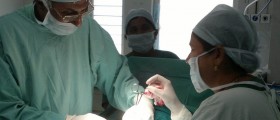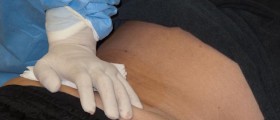Groin area is an area where the lower abdomen and upper tight meet, and sometimes the males feel the pain in this region. Players of hockey, soccer, football, and some other sports, usually experience this kind of pain. Furthermore, this pain also appears as a result of some injury. It manifests itself right away or appears gradually. This pain is very uncomfortable and sometimes severe, sharp, and intense. The males feel it when they lift something while walking, bending down, or running.
It is important to heal the pain properly; otherwise, the persistent using of the impaired muscles can aggravate the pain.
Most Common Causes of Groin Area Pain
Sometimes, groin pain in males can occur as a consequence of some bone injury, kidney stones, or hernia. Testicle pain can have a bad influence on groin pain, which is why it is recommended to always consult the doctor in these situations. Thus, the physician will establish the real cause of the appearance of such pain. There are several reasons why groin pain may happen in males.
One of the most frequent causes is the direct blow, resulting in swelling of the testicles. Painkillers and warm baths can alleviate the pain. Another cause is avascular necrosis, which is the term used for the death of bone tissue that happens because the blood supply is reduced. Avulsion fracture or ligament and tendon disconnected from the bone may also cause severe pain in the groin area.
Swollen lymph nodes are also a cause for the appearance of groin pain. They lead to the enlarged lymph gland, which is very important for the body’s immune system because they fight against infections.
As causes for groin pain are also considered kidney stones, muscle strain, bursitis or joint inflammation, as well as testicle inflammation, which is also called epididymitis. Furthermore, swelling of the scrotum, mumps, inguinal hernia, or the protrusion of some tissue into the scrotum, and inflamed testicle are in some cases the reasons why the groin area is painful.
In the persons who suffer from this pain, the physicians may also establish osteoarthritis, pinched nerve, sciatica, and scrotal masses, as crucial factors for the occurrence of the pain.
- The groin consists of the area where the abdomen meets the legs and includes the structures of the perineum. The following structures comprise the groin: lower rectus abdominis musculature, inguinal region, symphysis pubis, upper portions of the adductor muscles of the thigh, the genitalia, as well as the scrotum in males.
- The approach to athlete with groin pain can challenge the clinician for a variety of reasons as the cause of pain can be intra-articular, extra-articular or radiation from elsewhere. The first step in evaluating the groin pain in young athletes is to obtain a thorough history followed by a detailed physical examination to avoid missing the diagnosis. The key to history taking and the physical examination is to narrow down the differential diagnosis to either intra-articular pain or extra-articular pain.
- Ultrasound is a cheap, safe, quick and efficient tool providing exquisite soft tissue detail with the added advantage of providing a dynamic assessment. Dynamic ultrasonography seems to be a promising modality to exclude subtle hernias not detected by physical examination. Ultrasound has been reported to be also useful in diagnosing internal snapping hip syndrome (ISHS) caused by the iliopsoas tendon.
- Recent years have seen increasing number of hip arthroscopies being performed worldwide. Hip arthroscopy is now a very well-established procedure. This endoscopic procedure not only helps to diagnose some of these elusive intra-articular causes of groin pain, but also helps to treat specific lesions within the joint.
In addition, twisted testicles, testicular cancer, urinary tract infections, varicocele, and spermatocele are also some of the causes why the groin pain in males occurs. One of the reasons which can contribute to the occurrence of groin pain is orchitis, which is inflammation or swelling of one or both testicles. The proper medications and certain regular exercises can eliminate groin pain in males.

















Your thoughts on this
Loading...